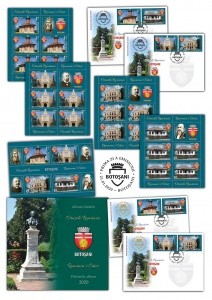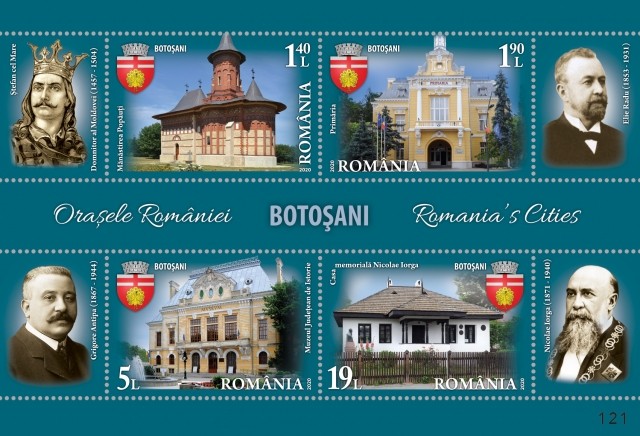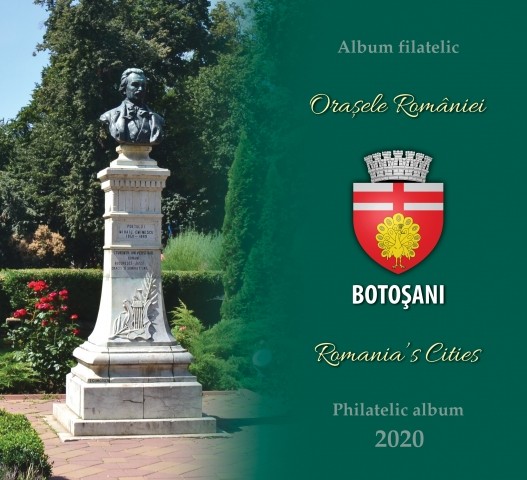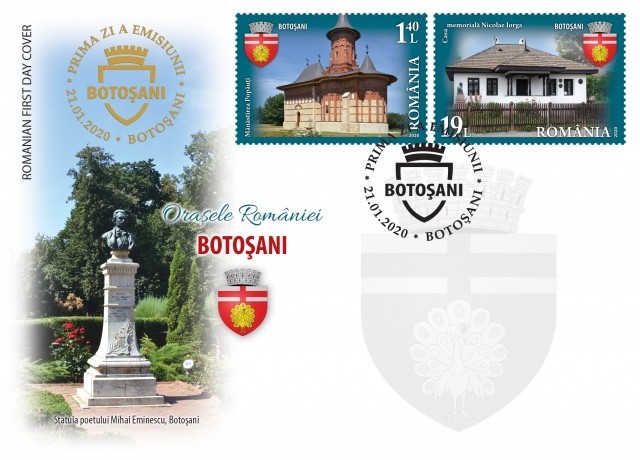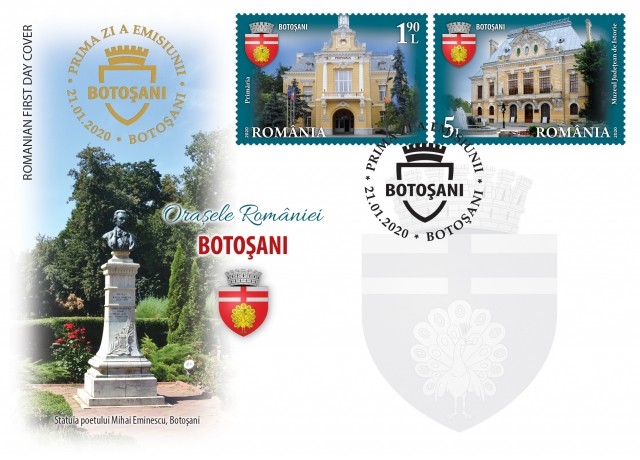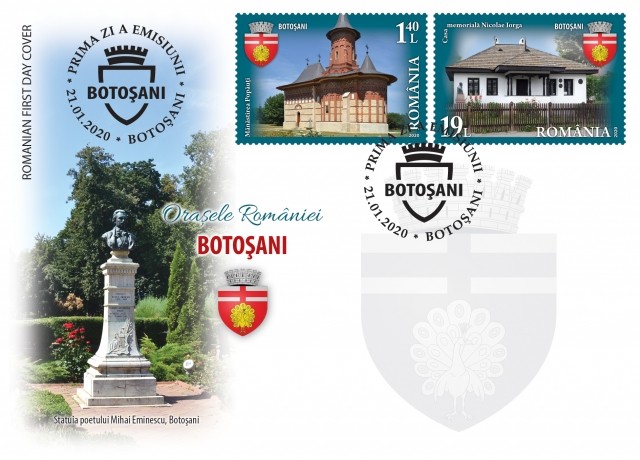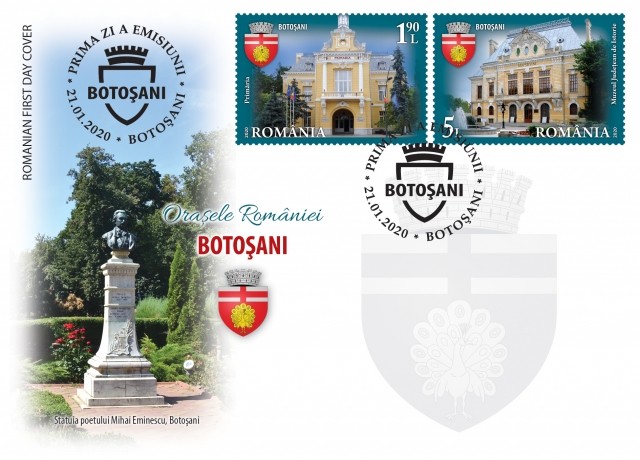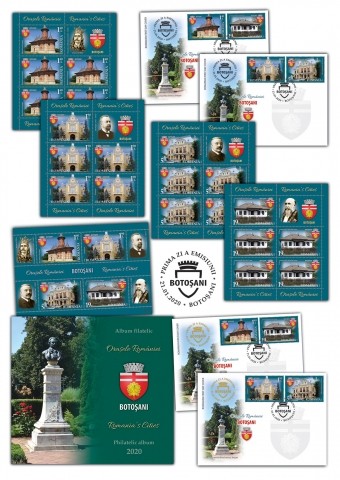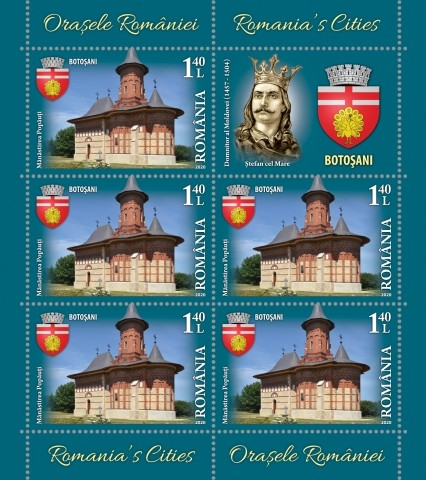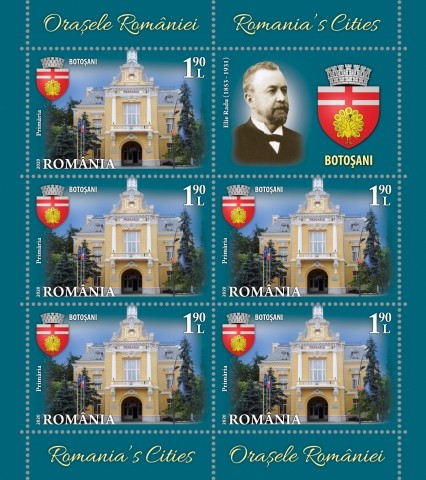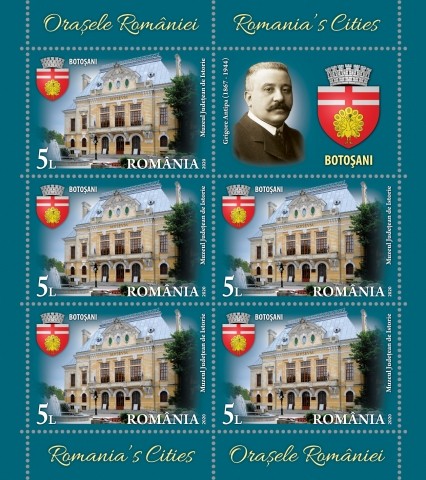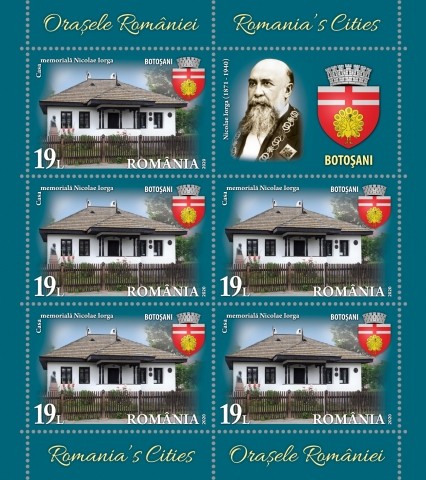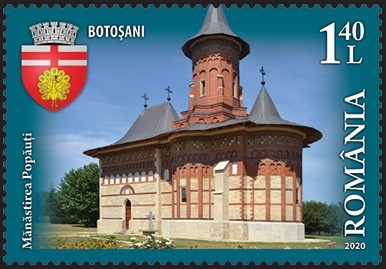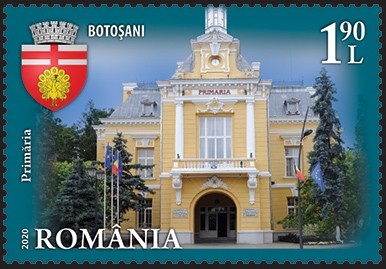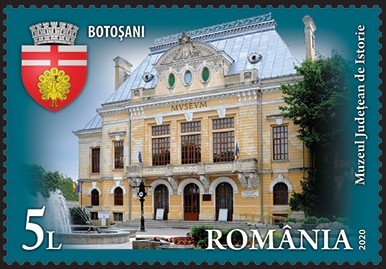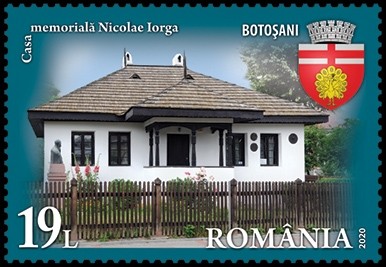Romfilatelia introduces into circulation on Tuesday, January 21st, current year, the thematic postage stamps issue, belonging to the series Romania’s Cities, dedicated to the city of Botosani.
Historically certified as a “fair”, the name of the city is found in a chronicle in 1439, when the common reign of Alexander the Good’s descendants to the throne was threatened by the invasion of Tatar hordes. The text is written as follows: “In 6947 (1439 n.s.), November 28th, the Tatars came and plundered up till Botosani.” As an inhabited area, archaeological research mentions it in the years 1350 or 1397.
The present and past of Botosani are explicitly represented in the architecture of buildings that see the evolution of the settlement, its stability over time, concerns for sustainability and aesthetic sense. Botosanii preserves, as in a true open-air museum, the testimonies of an ancient world: peasant households, noble mansions, sumptuous public buildings built in refined architectural styles.
A short itinerary could start from Stephen the Great Street where the Popauti Monastery is, founded by the great ruler who lent his name to the street and illustrated on the stamp with the face value of Lei 1.40.
Built in 1496, the Church of Popauti Monastery with the Dedication of Saint Nicholas was located at the crossroads of important commercial roads, halfway between Suceava and Harlau (two royal courts). The exterior, richly decorated with glazed brick belts, with discs that reproduce the zodiac signs, fantastic, heraldic and geometric figures, gives it an attribute of expressive originality. The old entrance of the church preserves the frame with broken Gothic arches, in the form of ribs carved in stone (also found in other churches of the great founder). It became a church of myrrh in 1863. It is declared a historical monument in 1897 and restored between 1899 and 1907.
Of course, Botosani also has a remarkable administrative centre through the architecture of a building that houses the City Hall headquarters, illustrated on the postage stamp with the face value of Lei 1.90. Also known as the Ianachi House, it was built in 1806, in an Eclectic style with visible German influences. Passed after some deeds of sale in the property of the Hatman Anastase Bașota, it arrives by reclaim to Grigore Ghica. It is given to Eforia, according to original documents at the Botosani branch of the National Archives. For a time, it became the seat of the Tribunal where from October 1864 to March 1865, Mihai Eminescu worked as a copyist. Between 1906 – 1914 the building was restored.
The history of Botosani, perceived as an oasis of tranquillity and greenery in full harmony with the old architecture, is present as a thoughtful composition in the edifice, historical monument, called the County Museum of History, illustrated on the stamp with the face value of Lei 5. Dating from 1913, the construction erected by the Italian masters, in Eclectic style, was initially intended for the headquarters of the Prefecture. The construction plans were elaborated by the architect Petre Antonescu.
Remains of the Paleolithic, Neolithic, Bronze and Iron civilization, polished stone tools and weapons, and bone, painted pottery (the famous Cucuteni pottery), familiarize the visitor with everything that has meant living on the beautiful lands of the Moldavian Botosani. An exceptional exhibition is the oldest human shelter in South-Eastern Europe, discovered in Ramniceni and partially rebuilt. It should be noted that some thematic exhibitions of the museum have been included in large exhibitions in the Vatican, in Switzerland and in Poland.
Honouring the memory of a prominent personality, referring to Nicolae Iorga, a memorial house in which the great historian lived, illustrated on the postage stamp with the face value of Lei 19, presents us with a photo-documentary exhibition, the first editions of his work, along with the impressive historical library. The original building with sloped walls was demolished in 1965, and in its place stood, between 1967 and 1975, a building covered with shingles and wooden pillars. Starting with 1977, it becomes a section of the Botosani County Museum of History.
Romfilatelia thanks the Botosani City Hall and the Botosani County Council for the documentary and photographic support granted in the achievement of this postage stamps issue.
The philatelic album, created into a limited edition of 211 pcs., is equipped with the special block of 4 stamps and the two “first day” covers of the issue having the “first day” postmark clearly imprinted in gold foiling. Both products are numbered in black from 001 to 211.
The postage stamps issue “Romania’s Cities, Botosani” will be available on Tuesday, January 21th 2020, in Romfilatelia’s shops network in Bucharest, Bacau, Brasov, Cluj-Napoca, Iasi and Timisoara and online on http://romfilatelia.ro/store/. The postage stamps issue is completed by 2 “first day” covers, and as page composition in sheet of 32 stamps, minisheet of 5 stamps + 1 label and block of 4 stamps.
For further information, please contact the Public Relation Office:
Tel: 021 / 336 93 92
















